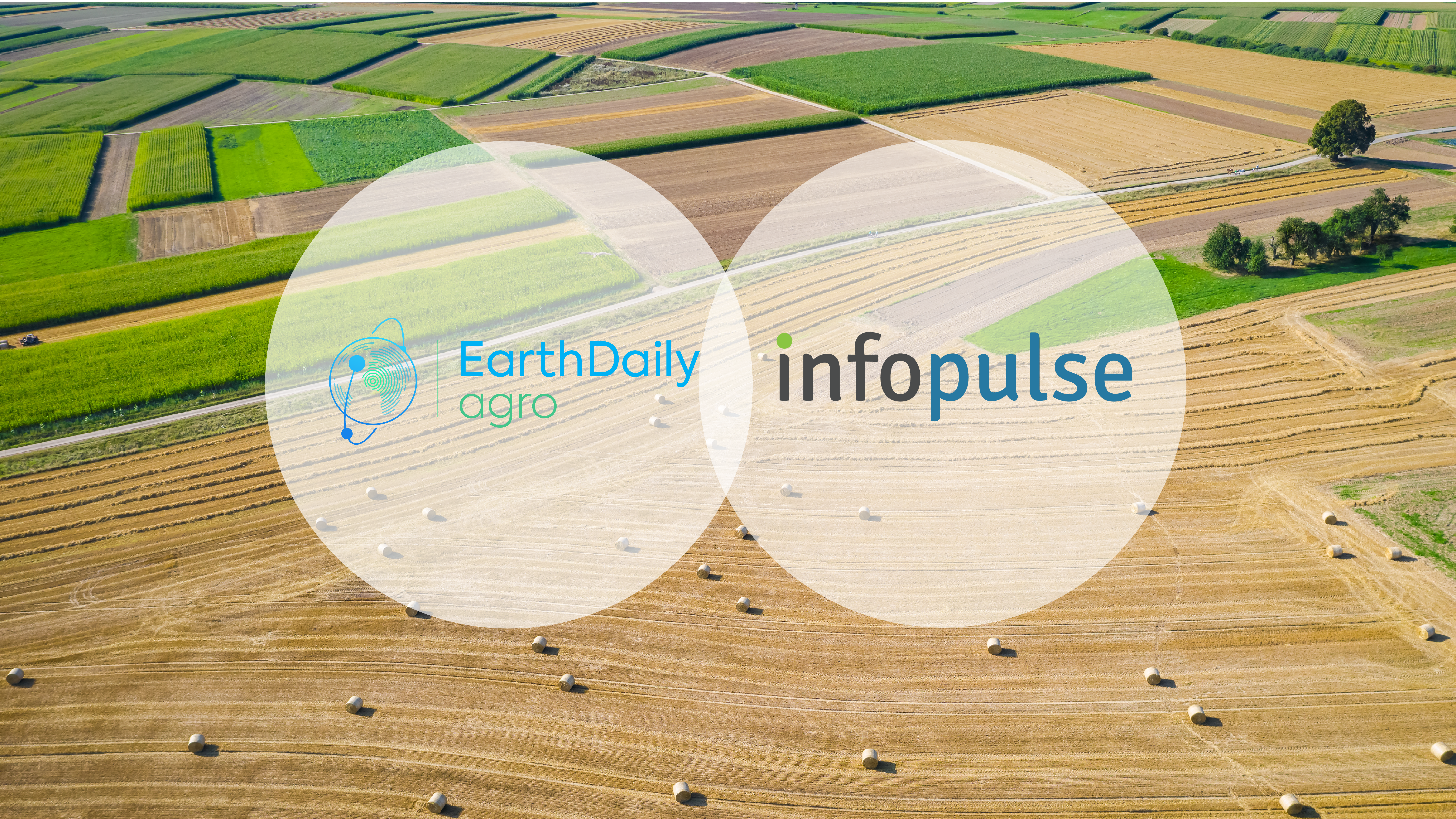Canadian Space Agency Funds EarthDaily for Climate Solutions

For local and regional stakeholders who share agricultural and environmental resources, reducing greenhouse gas emissions, intercepting and recycling agricultural nutrients before they damage lake and river ecosystems, and building resilience to climate impacts are all complex and critically important challenges. EarthDaily Analytics (“EDA”) is excited to announce new funding from the Canadian Space Agency under the smartEarth initiative, as well as a partnership with Strategic Systems Engineering (“SSE”). SSE and EDA’s collaboration will harness the power of Canadian remote sensing, satellite-derived geoanalytics, and environmental engineering expertise. This collaboration represents an important step forward in the pursuit of a comprehensive green solution, utilizing an innovative combination of high-quality scientific satellite landcover and vegetation growth products with best-in-class hydrologic engineering technology.
EDA will use high-frequency multi-spectral imagery to detect the presence and growth rate of wetland plants specialized in extraction of agricultural runoff nutrients found in wet areas of the agricultural landscape, ditches, and municipal allowances. EDA will utilize the services of Amazon Web Services to enable enterprise grade scalability, security, and reliability of our satellite processing and analytics services. SSE will leverage EDA’s value-added geoanalytics capabilities to plan and execute a macrophyte biomass harvesting program using conventional agricultural equipment modified for the task. This abundant renewable resource will be harvested for its nutrient, energy, and carbon content, with some biomass replacing fossil energy as a space heating fuel, and some biomass converted to biochar – a stable form of carbon loaded with agricultural nutrients that when applied as fertilizer accelerates the soil’s sequestration of atmospheric carbon. A key target of this process will be the collection of phosphorus, which is a key pollutant responsible for lake eutrophication – but also a scarce and valuable resource in its own right.
SSE CEO Hank Venema remarked, “As the business case for harvesting and processing multi-functional biomass proves out, we expect that farmers will re-purpose their lowest value, frequently-flooded land as floodwater retention areas designed for biomass harvesting. This collaboration with EDA is a huge step forward in proving to investors, farmers, and municipal officials the scale of this resource and the practicality of our harvesting and processing logistics.”
Don Osborne, CEO of EDA, commented, “When the EarthDaily Constellation comes online in 2023, we can scale EO-driven concepts such as phosphorus interception and re-use to global markets. By supplying value-added Earth Observation data and insights to our on-the-ground partners for environmental management solutions, we are also verifying the potential for EarthDaily Analytics to make possible Environmental, Social, and Governance (ESG) solutions in the physical environment, while also providing investment accountability and ensuring compliance with ESG mandates and environmental regulations. Environmental situational awareness at scale enables operational reliability for environmental management, hazard mitigation, and resource capture – all of which can be accurately and consistently measured from space using our market-leading solutions. We are excited to work with our partners to continue to expand and validate this application.”
Recognizing that environmental systems are not subject to jurisdictional borders, Earth Observation informed by scientific data is poised to play a key role in scaling hydrologic management systems from a local to a regional basis. The regional benefits of this work are enormous and will prove larger networks of pollutant interception and beneficial re-use are feasible – a concept that scales for global environmental protection. In Manitoba, this work has the potential to transform a significant piece of the agriculture landscape with limited economic value into multi-functional climate risk management zones, where we intercept and harvest high-energy, high-nutrient biomass to protect our ecosystems, fight climate change, and build resilient communities.
[1] Left: Photo by Sharon Mollerus / CC BY; Right: Copywrite Strategic Systems Engineering


